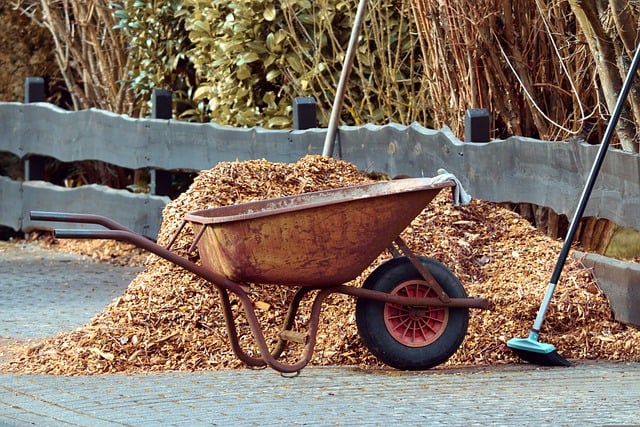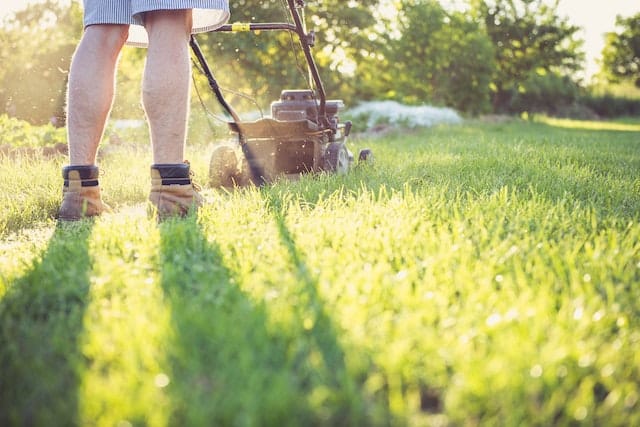Hydroseed is an inexpensive gardening alternative for your lawn. You may be wondering how Hydroseed differs in regard to other planting processes, the level of maintenance and care that is required and importantly, how long can hydroseed go without water?
The name of the Hydroseed game, most specifically, is moisture. In order to keep Hydroseed working most effectively, you should aim to water your lawn every 3-5 days. This will keep the system adequately hydrated in order for it to continue working to its full potential. With Hydroseed, you can quickly and easily restore lush, green lawns in a fraction of the time it would take with traditional planting processes
This article will go into the pros and cons of hydroseed for your lawn, as well as some standard practices for maintenance and lawn care.
What is Hydroseed?

Hydroseed is a mixture of mulch, fertilizer, grass seed and biostimulants. It is a more cost-efficient option for your lawn over sod, and less time-consuming than traditional seeding. Hydroseeding uses a thick spray that covers bare ground in order to grow grass while maintaining soil levels and avoiding erosion.
The mulch keeps the seeds locked into the soil while also increasing growth using its fertilizer compounds. It can also add a layer of protection from elements like wind or too much direct sunlight. Its ability to decompose on the grass itself also makes it nutrient-rich for your lawn.
It is often used to seed larger areas of ground due to its ability to be applied via a spray. It’s also an efficient planting process on otherwise difficult terrain, such as slopping hills. Hydroseed can be installed by a specialty lawn care company, or you can do it yourself and purchase it from your local gardening store.
What Is Needed Before I Hydroseed My Lawn?
There are some basics to consider if you choose to spray Hydroseed yourself. It is best to remove weeds, rocks, and other plants from the area so that the spray can best reach the soil. The less you have in the way between the slurry and the soil, the more uniform your lawn will look.
Next, follow this checklist to make sure your lawn is best prepared:
- Choose the exact seed you want in your custom Hydroseed slurry mix. The conditions of your region and the weather is an important factor to consider with which seeds will perform best.
- Test the soil. Most grass thrives in soil with a pH level of 6.5-7. You can either buy a soil testing kit and do it yourself, or take a sample to a professional lawn care company to analyze.
- Grade the soil about 2-3.5 inches below the actual grade you want to avoid any moisture-related damage to your house or other objects on your lawn.
- Prep the soil with a 2-inch layer of topsoil and compost for the best chance of it growing dense and strong.
- Prepare your Hydroseeder by mixing the seeds through the agitator to create the slurry that you will spray on the lawn.
What are the Basics of Hydroseed Care?

There are some important instructions to follow on a lawn that has been sprayed with fresh Hydroseed in order for it to grow to its full potential.
- Limit traffic – it is best to give your lawn about 5-6 weeks with minimum disruption. This includes foot traffic, dogs, and motorized vehicles. This gives the grass a chance to mature and grow in strength.
- Water regime – Hydroseed needs a lot of water as it’s in its infancy stages. Regular watering should begin one day after being planted, three times a day to start, and only about five minutes per time. The aim is to keep the grass consistently hydrated. Once the seed has germinated, you can reduce watering to every other day.
- Mowing – you may begin to mow your lawn once the grass reaches a height of at least 3 inches. Hydroseed grass should never measure shorter than 2 inches.
- Fertilize – while Hydroseed does contain a fertilizer compound, it is still recommended to fertilize your lawn after the first 30 days of application. High nitrogen fertilizer is best, while a weed control fertilizer is not recommended for the first 3 months. Weed control chemicals are known to be harsh on grass and could throw off the growth process entirely.
Why Is My Hydroseed Not Growing?
Several factors can cause your hydroseed not to grow. Let’s take a look at some of them:
1. Harsh Weather Condition
Drought, excess heat, cold, or a heavy rainfall can prevent the hydroseed from thriving. When the weather is not favorable, seeds may not survive. During extreme weather conditions, invest more time and energy in the hydroseeded lawn. This will allow it to yield a positive result.
2. Presence of Weeds
Most of the time, weeds on your hydroseeded lawn will limit their growth. These unwanted plants will always share nutrients, sunlight, and water with the hydroseed. Once you get rid of them, the seeds should begin to grow.
3. Uneven Application
If you do not apply the hydroseed mixture the right way, the seed may struggle to grow. In some cases, the growth may be in patches or look scanty. Before applying the hydroseed, you need to mix it thoroughly. Then, apply the hydroseed from different angles to get the best results.
4. Low Seed Quality
One of the factors that plays a role in the growth of your hydroseed is the seed you use. There’s a chance that low-quality seeds will not sprout. To get the best results, use only high-quality, natural seeds.
How Long Does it take Hydroseed to Germinate?
Germination is the process that starts once a seed has begun to sprout. In ideal growing conditions, Hydroseed can germinate in as quick as 5-10 days. If you are applying Hydrosseed during more strident conditions, such as an area with high winds or overly dry, it can take as much as 15 days to germinate.
How Does Hydroseed Compare to Sod?

While sod is a quicker method to establish your lawn, it also comes at a higher expense. A study from crabgrasslawn.co concluded that sod is up to 70% more expensive than Hydroseed.
The main benefit of sod is that the grass is already fully matured, so the overall maintenance is far easier as you can essentially begin to use your lawn right away.
The cons, however (other than the price tag), are that sod grass is often harder than grass grown directly from the soil. You also lose the ability to build your own seed mixture, another unique benefit of using Hydroseed.
More on lawn care:
In Summary
In the end, while you have several options on how to grow your ideal lawn, Hydroseed is a worthy contender. Factors to take into consideration range from prep/growth time, maintenance, appearance, and price.
Hydroseed is a good middle ground between seeding and sod, as it grows a healthy lawn in up to two months with an affordable price tag and a low effort of care once matured.
Frequently Asked Questions
What time of year is best to plant Hydroseed?
Depending on where you reside in the world, early spring is an optimal time to plant Hydroseed. You want to avoid the scorching heat and dry conditions of the summer, as well as the morning frost that comes with autumn.
Spring is ideal as there is more rainfall, so you will not have to put in as much effort in its early stages with watering three times a day manually.
How often should you water Hydroseed once matured?
It is important to keep a keen eye on your lawn when using Hydroseed. If it looks, dry, it probably needs water. It is important for Hydroseed to keep moist. A good rule of thumb is watering every 3-5 days once out of the infancy stages of growth.
What are the Pros and cons of using Hydroseed for your lawn?
There are even more benefits to using Hydroseed for your lawn other than its price and convenience.
Hydroseed mixtures can be custom-made, so you have the choice of which seeds you want in your mixture. Also, due to its seed and water infusion, more ground can be covered as well as tricker terrain over traditional seeding.
The spray component also results in a more even and uniform appearance than other methods of seeding, which can sometimes be patchy.
There are some cons as well. At the early stages when the slurry is first getting settled in, an intensive water regime is required. Also, Hydroseed has been shown to be less effective than traditional seeding practices if you do it on your own instead of using a professional company.

Hey, I’m Lisa and I’ve been an avid gardener for over 30 years. I love writing, talking and living in the garden! Feel free to connect with me on my socials below

